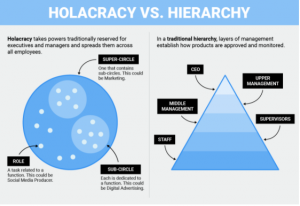The world of employment has evolved significantly over the years, with different generations experiencing and interpreting work in distinct ways. Baby boomers and millennials, What Generation Am I? A Guide to Generations by Year (parents.com)separated by several decades, have grown up in contrasting socio-economic, technological, and cultural landscapes. These factors have played a role in shaping their perspectives on employment. In this article, we will delve into the divergent viewpoints of baby boomers and millennials regarding work, examining their values, priorities, and approaches to careers.
Work-Life Balance
Baby Boomers:
For many baby boomers, work was often seen as a means to provide for their families and secure a stable future. Many were part of the traditional 9-to-5 work culture, where long hours at the office were considered necessary for career advancement. The concept of “putting in the time” was deeply ingrained, often at the expense of personal and family life.
Millennials:
Millennials, on the other hand, tend to prioritize work-life balance. Work Life Balance | Mental Health America (mhanational.org)They witnessed their parents’ dedication to their jobs and the toll it took on family life. As a result, millennials often seek flexible work arrangements that allow them to balance their careers with personal interests and family time. Remote work and freelance opportunities are particularly attractive to this generation, enabling them to integrate work into their lives, rather than the other way around.
Career Loyalty
Baby Boomers:
Loyalty to one’s employer was a hallmark of the baby boomer generation. Many individuals spent the majority of their careers at a single company, viewing job stability and benefits as vital components of their employment. Climbing the corporate ladder and staying with the same company until retirement were common aspirations.
Millennials:
Millennials tend to value personal growth and skill development over long-term loyalty to a single employer. They are more willing to change jobs and even switch careers in pursuit of new challenges and opportunities. This fluid approach to employment can be attributed, in part, to the economic instability witnessed during their formative years and the rise of the gig economy, What is the gig economy and what’s the deal for gig workers? | World Economic Forum (weforum.org) which has normalized job hopping and freelancing.
Purpose and Fulfillment
Baby Boomers:
While many baby boomers found purpose and fulfillment in their work, these aspects were often secondary to the financial stability that employment provided. Career choices were frequently influenced by practical considerations rather than a quest for personal passion.
Millennials:
Millennials seek meaning and purpose in their careers. They are more likely to prioritize jobs that align with their values, allowing them to make a positive impact on society and the environment. This generation places a premium on job satisfaction and is willing to make career decisions that reflect their personal beliefs and goals, even if it means sacrificing higher-paying opportunities.
Technology and Adaptability
Baby Boomers:
Baby boomers adapted to technology as it emerged, but their careers were not as intertwined with digital tools and platforms as those of millennials. They often had to learn new technologies later in their careers, and some may have viewed technology as a disruptor rather than an enabler.
Millennials:
Having grown up in the digital age, The Digital Age: The Era We All Are Living In – DZone millennials are comfortable with technology and its rapid evolution. They readily embrace new tools and platforms, which has contributed to the rise of remote work, digital nomadism, and the gig economy. This adaptability allows them to navigate an ever-changing job market with relative ease.
In conclusion, the differing perspectives of baby boomers and millennials on employment reflect the evolving nature of work and societal values. While baby boomers often prioritized stability and financial security, millennials place greater emphasis on work-life balance, purpose-driven careers, and adaptability. Understanding these generational differences Generational Differences in the Workplace [Infographic] (purdueglobal.edu) is crucial for employers, policymakers, and individuals seeking to thrive in the modern world of work, fostering collaboration and harnessing the strengths of each generation.







